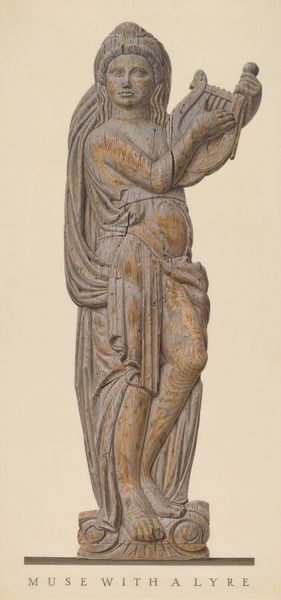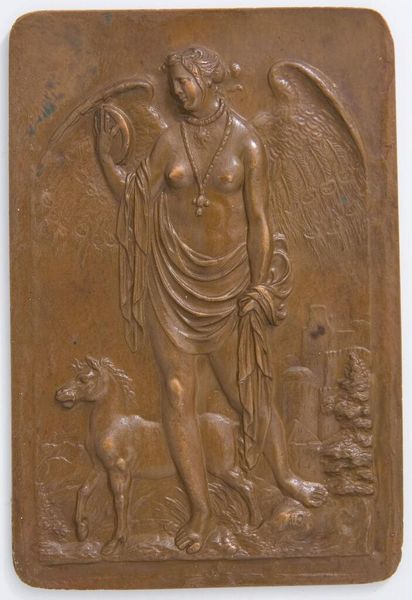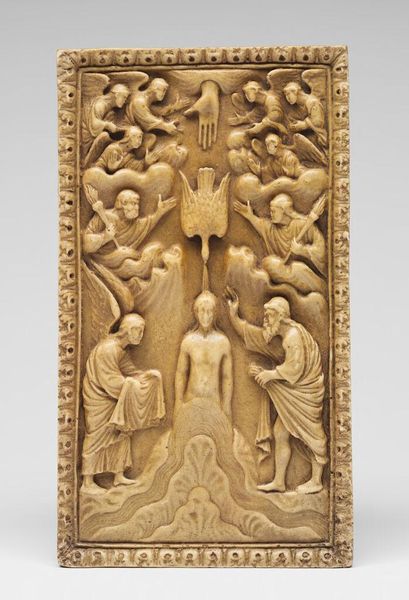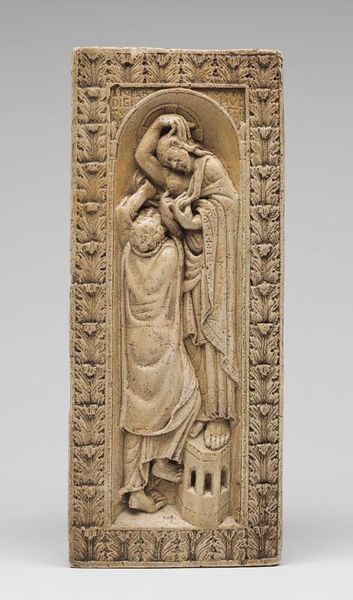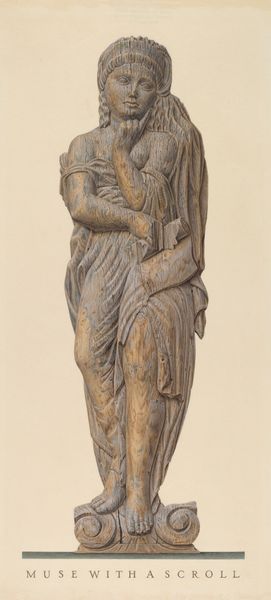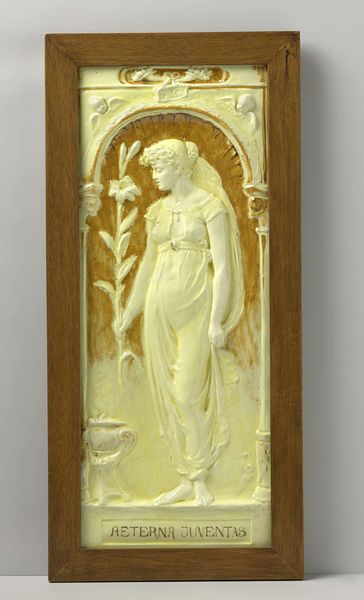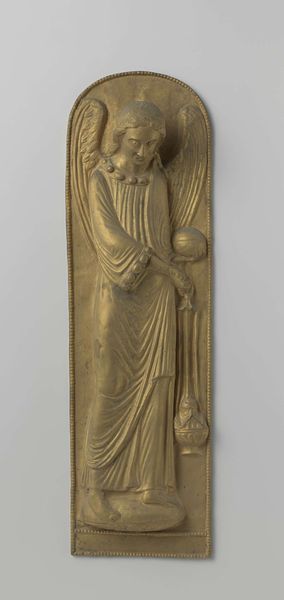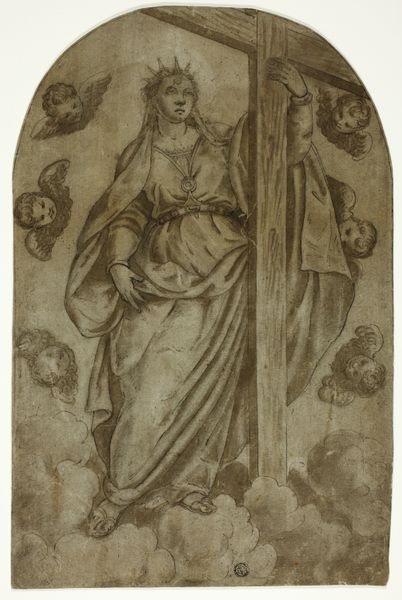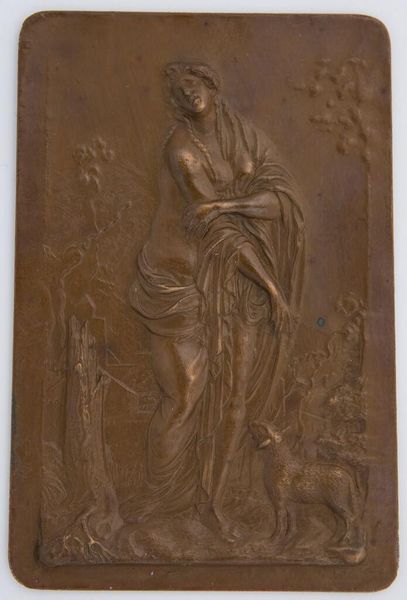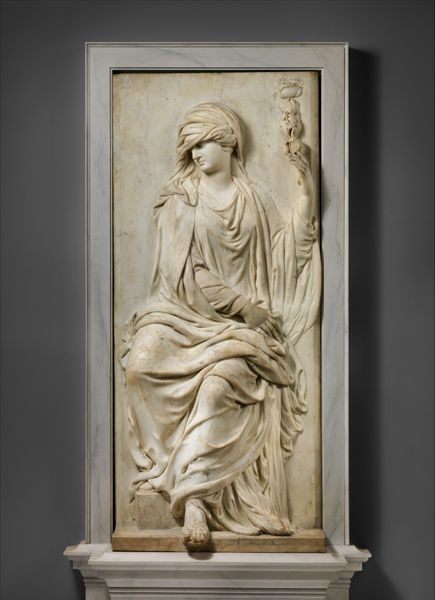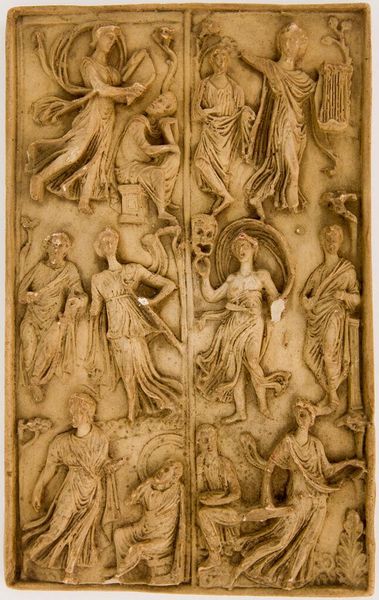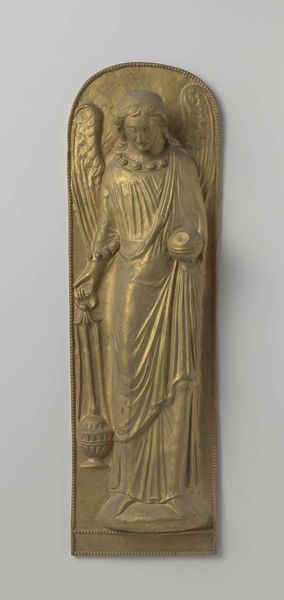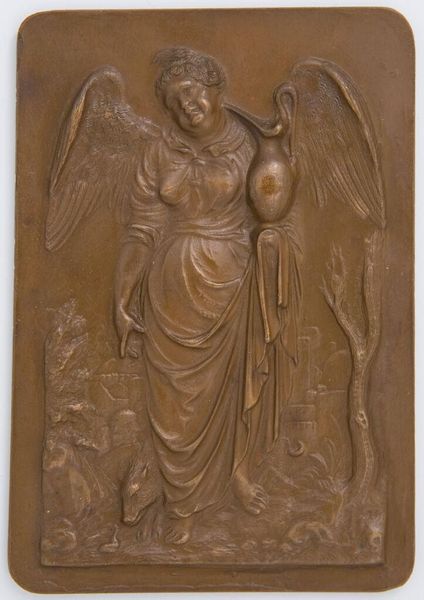
Renderings of an Ivory Carving of Ariadne from the 6th Century and an Ivory Plaque from the 9th Century
0:00
0:00
drawing, watercolor, ink, pencil
#
portrait
#
drawing
#
figuration
#
watercolor
#
ink
#
coloured pencil
#
ancient-mediterranean
#
pencil
Dimensions: overall: 30.5 x 22.1 cm (12 x 8 11/16 in.)
Copyright: National Gallery of Art: CC0 1.0
Curator: Today we're examining Herman Wilhelm Soltau's "Renderings of an Ivory Carving of Ariadne from the 6th Century and an Ivory Plaque from the 9th Century." It's a compelling drawing combining pencil, ink, and watercolor. Editor: My first thought is that they convey an almost ethereal stillness, especially the figure of Ariadne. There’s a striking contrast between the flowing lines of her drapery and the rigidly defined decorative elements on the other carving. Curator: Yes, Ariadne on the left presents a flowing, organic form in contrast with the compartmentalized and highly stylized animal combat scene to the right. It's quite clever how Soltau captures that. I also want to discuss how the historical context affects their meanings and original settings. Editor: I'm intrigued by the rendering's emphasis on materiality. Look how carefully Soltau uses shading and color to evoke the creamy texture of ivory. That, in itself, speaks to ivory’s cultural capital. Where and how these items were originally viewed would dramatically alter our understanding. Curator: Precisely. In examining the structure of the rendering, how does the positioning of Ariadne—with her calm posture—affect the interpretation when coupled with the dramatic, nearly violent imagery of the 9th-century plaque? Editor: For me, the very presence of cherubs and mythological figures surrounding Ariadne indicates a prevailing set of socio-religious values that elevated ideals of beauty. However, that juxtaposes to a rather different form of display on the 9th-century carving that would potentially elicit different reactions and display some sort of authority? Curator: Consider also how this watercolor translation alters their reception. What does it signify that Soltau chose to represent these sculptures through drawing, changing the medium completely? Is it a form of preservation? A commentary? Editor: And, in the gallery context, does showcasing this work prompt a vital conversation about art, collecting, or history's legacy? Curator: Indeed, viewing them in such a form alters our visual processing—causing us to ponder on historical distance. Editor: Absolutely. These works, through Soltau’s representation, invite reflection on what is truly being “rendered”: history, art, or culture itself.
Comments
No comments
Be the first to comment and join the conversation on the ultimate creative platform.
